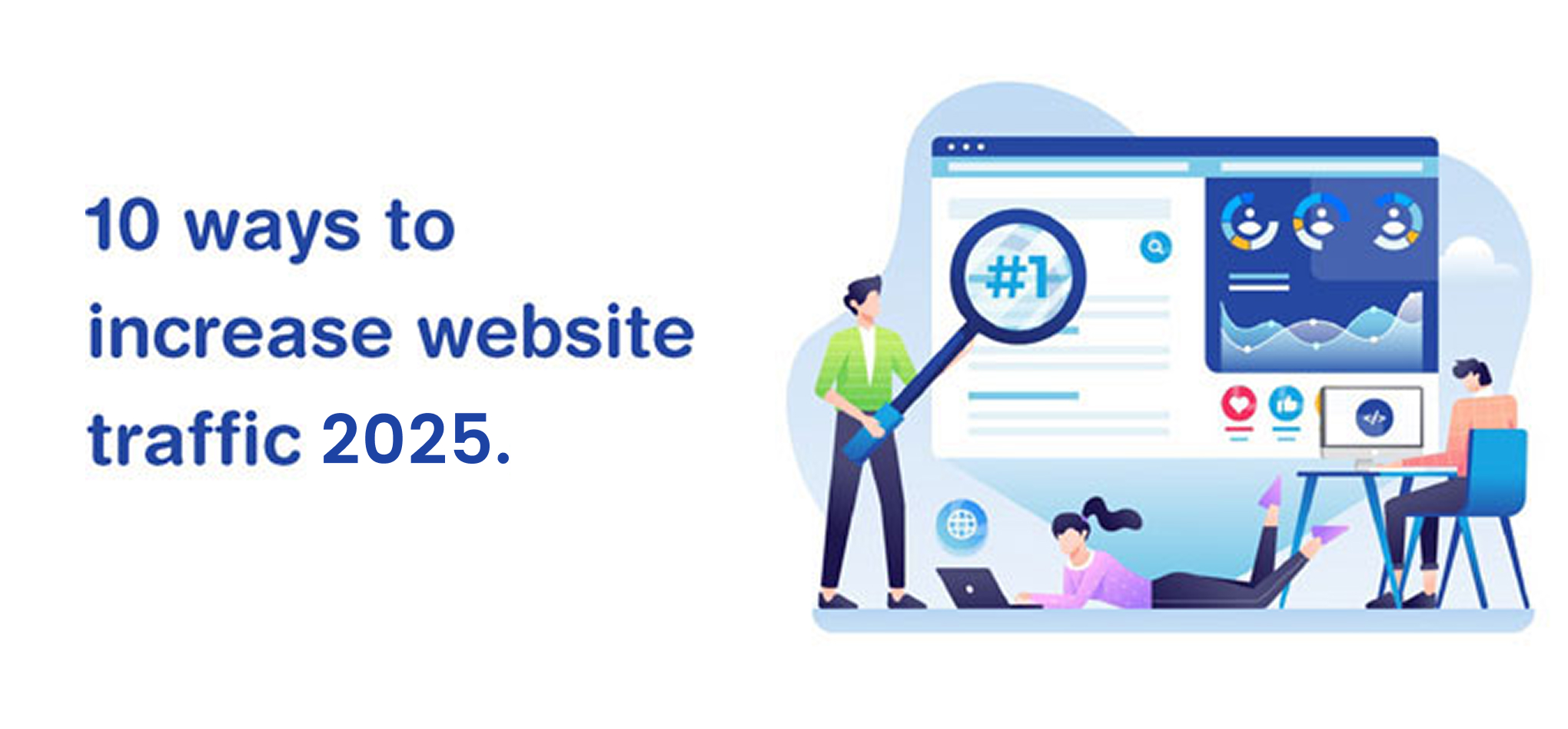In today’s fast-evolving digital world, building sustainable website traffic is more than just an SEO challenge. Businesses of all sizes need a consistent flow of targeted visitors to grow their online presence, generate leads, and drive conversions. That’s why many turn to experts and hire professional WordPress developer teams to ensure their websites are fast, optimized, and designed to perform in a competitive environment.
While digital tools and algorithms have evolved since the early 2020s, the fundamentals of traffic generation – valuable content, user experience, and smart promotion – continue to dominate. In this blog, we’ll explore ten updated and effective ways to increase website traffic in 2025, based on current trends, data, and technologies.
1. Create Valuable, AI-Enhanced Content
Content creation has changed quickly with the help of AI-powered tools, but quality content always remains king. In 2025, the most successful websites create content that’s not only informative but also personalized and backed by real-time data. AI-assisted content creation tools can help you scale, but originality and authority are still difficult.
Whether you’re publishing how-to articles, industry deep dives, or interactive guides, focus on solving user problems with fresh perspectives. Add value through expert commentary, case studies, and multimedia formats to stand out in an AI-saturated landscape.
2. Optimize for Voice and Visual Search
With voice assistants and visual search becoming more common on mobile and smart devices, optimizing your content for conversational queries and image-based search is crucial in 2025. This includes using natural language in your content, structuring FAQs, and ensuring images have detailed alt text and schema markup.
3. Leverage Programmatic SEO for Scalable Growth
Programmatic SEO involves using automation and templates to create hundreds or even thousands of SEO-optimized pages targeted at long-tail keywords. This strategy, which grew rapidly in 2024, is now a mainstream growth tool in 2025.
By combining structured data, automated content modules, and internal linking strategies, websites can scale content output and dominate niche-specific search queries.
4. Invest in Social Media Distribution
It is not enough that we are getting organic reach in social media. In 2025, strategic distribution – including collaborations with niche influencers and micro-creators – is important to extend your content’s reach.
The benefits of social media marketing also include boosting brand credibility, driving traffic back to high-performing landing pages, and enhancing engagement metrics that positively impact SEO.
5. Utilize AI-Driven Personalization on Your Website
Modern web visitors expect personalized experiences. AI tools now analyze user behavior in real time to dynamically show content, offers, or calls to action tailored to each visitor. In 2025, this is not a luxury – it’s a best practice.
6. Improve Core Web Vitals and User Experience
Google’s emphasis on Core Web Vitals has only grown in 2025. These metrics – loading speed, interactivity, and visual stability – directly affect how your site ranks and how users interact with it. A slow or glitchy website can cause you to lose valuable traffic, regardless of how good your content is.
7. Build Topical Authority and Semantic Clusters
Search engines in 2025 favor topic-based authority. Instead of scattering content across broad themes, organize your content into clusters that link back to a central “pillar” page. This structure not only improves crawlability and SEO but also signals to search engines that your site is a subject matter expert.
8. Refresh, Repurpose, and Retarget Evergreen Content
Updating older content with current data, enhanced visuals, and updated SEO practices is one of the fastest ways to regain lost traffic. In 2025, Google prioritizes “freshness,” especially for topics that evolve rapidly (like technology or digital marketing).
Repurposing blog posts into YouTube videos, carousel posts, or LinkedIn articles can extend your reach and give your best content a second life.
9. Launch Interactive Tools and User-Generated Content
Tools like calculators, quizzes, and interactive infographics are powerful magnets for user engagement and shares. They also tend to attract high-quality backlinks, which boosts organic traffic.
10. Use Data to Continuously Optimize Your Strategy
Data analytics tools in 2025 are more accessible and powerful than ever. Platforms like GA4, Microsoft Clarity, and AI-powered heatmaps offer granular insight into user behavior. Use this data to identify traffic sources, track content performance, and spot conversion leaks.
Don’t just analyze—experiment. A/B test your headlines, CTA placements, and even content formats. Real-time feedback and adaptive optimization help you stay agile and responsive to audience needs.
Conclusion
As digital marketing evolves, the fundamentals of increasing website traffic remain grounded in delivering value, staying technically sharp, and adapting to user expectations. From leveraging AI-driven personalization to optimizing for voice search and strengthening your topical authority, each strategy discussed here plays a role in attracting and retaining the right audience.
For more insights on website development trends and digital growth strategies, follow us on LinkedIn.
